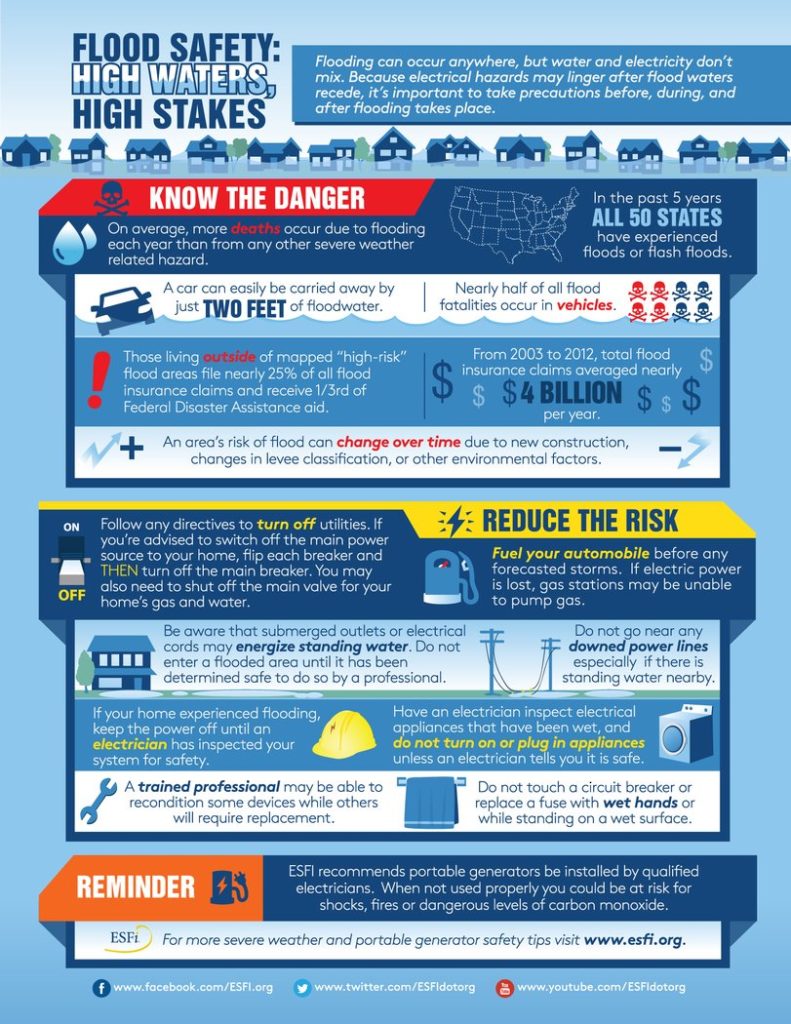
Flooding can occur anywhere, but water and electricity don’t mix. Because electrical hazards may linger after flood waters recede, it’s important to take precautions before, during, and after flooding takes place.
Know the Danger
- On average, more deaths occur due to flooding each year than from any other severe weather related hazard.
- A car can easily be carried away by just two feet of floodwater
- Nearly half of all flood fatalities occur in vehicles
- Those living outside of mapped “high-risk” flood areas file nearly 25% of all flood insurance claims and receive 1/3rd of Federal Disaster Assistance aid
- From 2003 to 2012, total flood insurance claims averaged nearly $4 billion per year
- An area’s risk of flood can change over time due to new construction, changes in levee classification, or other environmental factors
Reduce the Risk
- Follow any directives to turn off utilities. If you’re advised to switch off the main power source to your home, flip each breaker and THEN turn off the main breaker. You may also need to shut off the main valve for your home’s gas and water
- DO NOT go near any downed power lines especially if there is standing water nearby
- If your home experienced flooding, keep the power off until an electrician has inspected your system for safety
- Have an electrician inspect electrical appliances that have been wet, and do not turn on or plug in appliances unless an electrician tells you it is safe
- A trained professional may be able to recondition some devices while others will require replacement
- Do not touch a circuit breaker or replace a fuse with wet hands or while standing on a wet surface